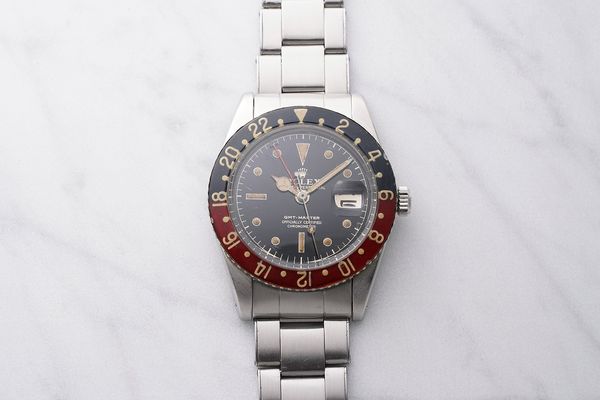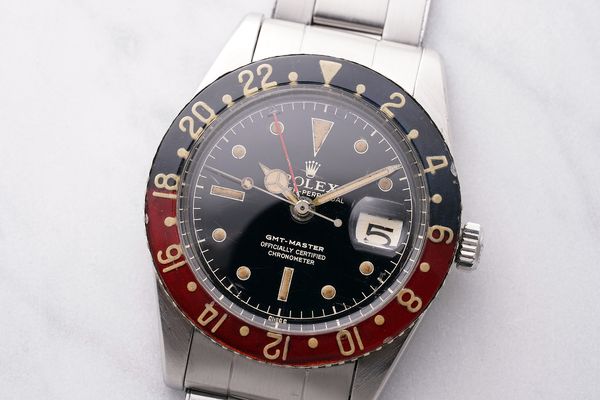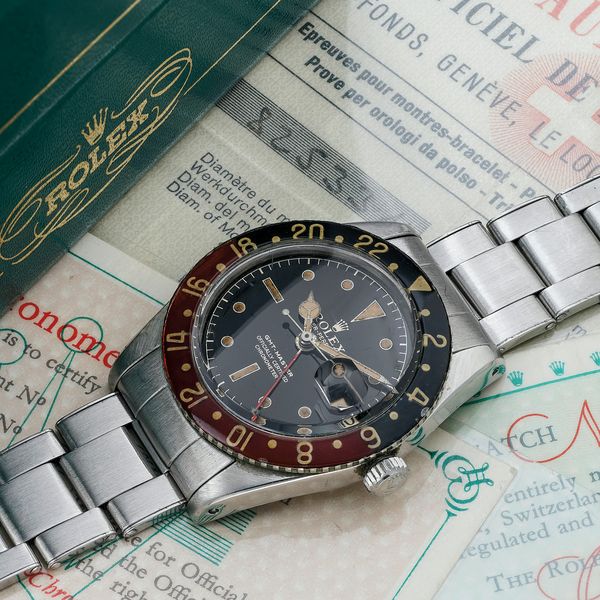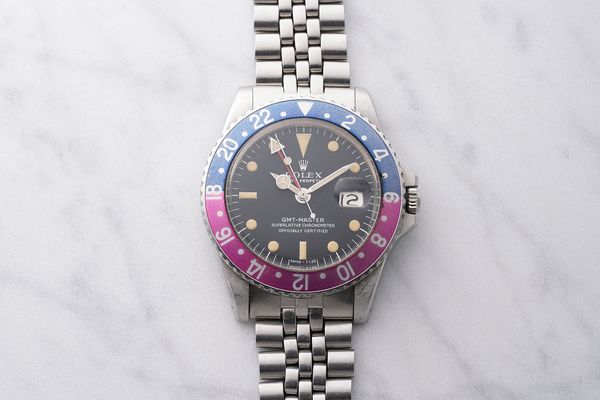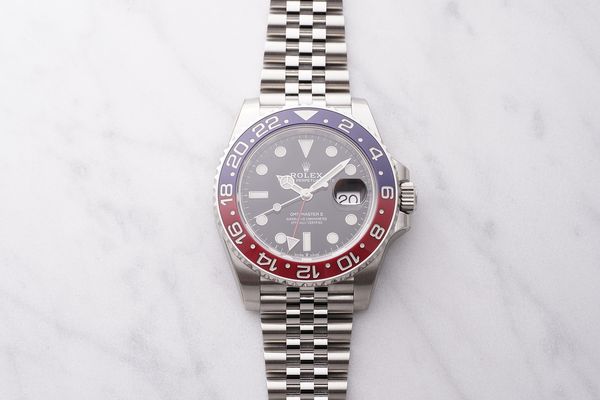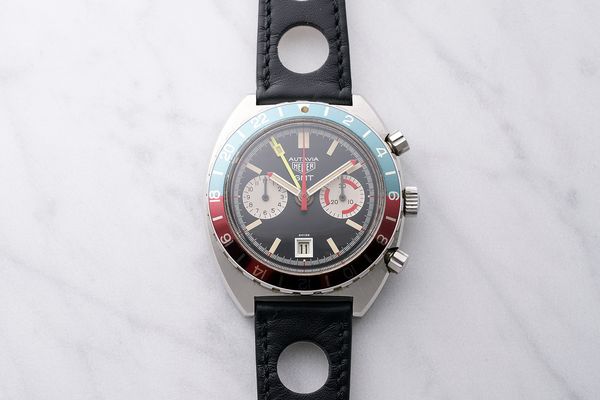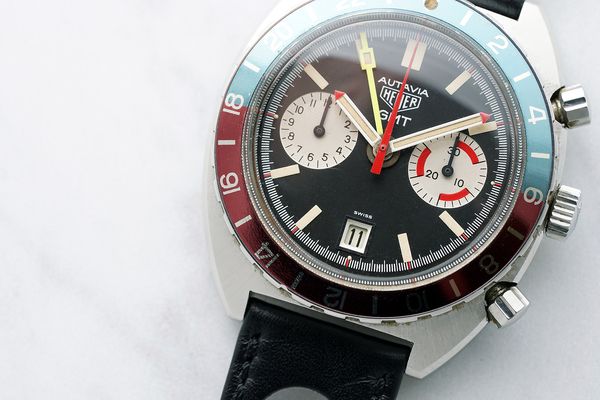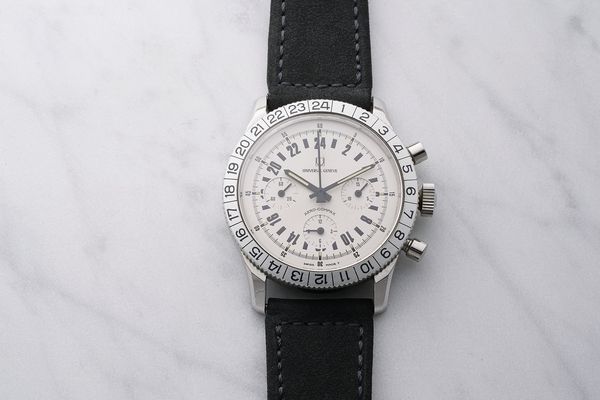- by Virginie Liatard-Roessli
Perhaps one of the most important decades for watchmaking, the 1950s is defined by the growth of Europe and North America’s economies resulting in a post-war manufacturing boom. With the influence of new technology, demand for watches – especially automatic watches – encourages the release of new models.
It is in this landscape that Pan American Airlines approaches Rolex in the early 1950s to produce a watch that would become part of their pilots’ uniform. With the increase in transatlantic flights, Pan Am realized the importance of having a watch that would help their pilots keep track of time in two separate time zones.
Rolex’s answer was the very first GMT-Master. Launched in 1954, the first GMT Master model, reference 6542 was very daring for its time. Little did they know back then this would become one of the company’s most iconic models.
It was one of the first watch to display bright colours. Until the launch of the model, watches were either white, black, silver or gold. So with its red and blue bezel, the GMT was as disruptive and attractive as the flight crew’s uniform.
Other features of the reference 6542 were more typical of Rolex’s other watches. Presented in an Oyster case, the watch had a screw case back to protect its patented automatic movement, but did not have crown guards (yet).
What makes the watch especially collectible today is what many consider its most important feature: the Bakelite bezel. Bakelite is a sort of natural plastic that was used broadly in design at the time as it was very easy to mold. Unfortunately, it was also extremely fragile and, just like porcelain, would break with even the smallest choc.
With the effect of time, the brittle Bakelite would often flake. This is the reason why so few models survived the test of time and remain in good condition. The feeling of handling a piece such as the one above, which comes to The Geneva Watch Auction: EIGHT and that stands out because of its superb condition, is indescribable – I was at a loss for words when I first saw it. Not only is the Bakelite bezel in remarkable condition, with almost no flaws to report, but the condition of the case is equally remarkable.
With this model we can truly appreciate the care with which Rolex handled the finer details of the design, such as creating a bevel that runs all the way along the lugs. The fully original black dial in this example retains its thick and well defined luminous indexes, and the fact those have aged to a creamy colour is something the most demanding collector will certainly appreciate. The colour of the luminous indexes and hands is actually very typical of how the material used at the time would patina with time.
The Rolex GMT-Master ref. 1675, the successor of the ref. 6542.
Rolex’s next GMT-Master was the reference 1675. Introduced in 1959, the watch presented a number of modifications aimed at fixing the first model’s most fragile points. The Bakelite bezel was replaced by a more robust metallic insert that would also reduce the risk of glare, and crown guards were added to the case. The two bezels are quite easy to identify in vintage models.
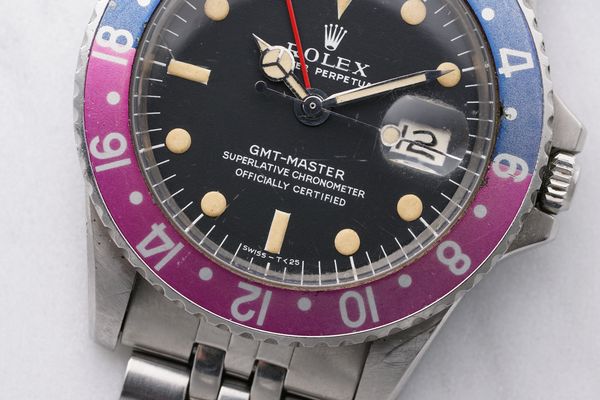
While the Bakelite bezel ages to a darker shade, the metallic bezel has a more inconsistent way of changing colours. In some cases, the red and blue remain quite vibrant, but in others, such as the model available in The Geneva Watch Auction: EIGHT, the bezel can become raspberry / light blue.
The Rolex GMT-Master II Ref. 126710BLRO.
Otherwise, the design remained almost unchanged. The strength of the original design meant that Rolex kept the colourful bezel and red second hour hand with a luminous triangle tip – features that would become part of the GMT-Master’s DNA, and would later inspire its own future. Just this year, Rolex released its latest GMT featuring the extremely attractive “Pepsi” bezel first introduced more than 60 years – the new GMT-Master II Ref. 126710BLRO with jubilee bracelet.
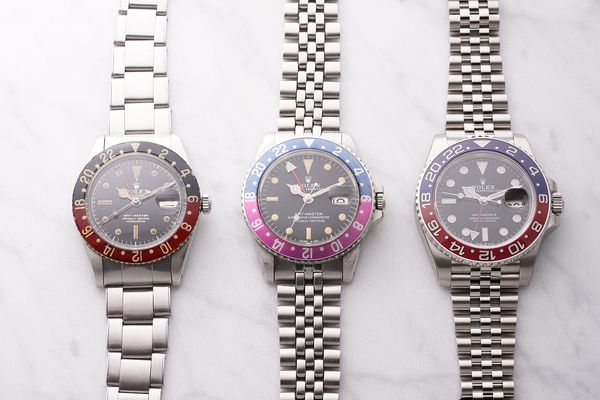
Three generations of Rolex GMTs.
During that time, the watch inspired models from other manufacturers wishing to enter the growing travel wristwatch market. One of the best examples of that happening is the Heuer Autavia GMT, which was Heuer’s first time combining a chronograph and GMT.
Presented at the end of the 1960s in the original Autavia case, the GMT adopted the Pepsi-style bezel that clearly differentiates AM and PM. Until then, the Autavia had only featured black bezels, which made the GMT the most colorful Autavia.
The Heuer Autavia GMT
Following the launch of an automatic GMT, the manual-winding versions, such as the present example from 1974, became more difficult for Heuer to sell, making them rare and therefore sought-after model today, as the public now realizes what a beautiful and interesting watch it was.
Other manufacturers wishing to offer innovative travel watches introduced their own solutions, often using pieces from their past. Universal Genève for example, released a dual time version of its Aero-Compax. Fitted with a 24-hour dial and revolving bezel also graduated to 24, the watch gave its owner a view of the time in two different time zone, whilst also making the difference between day time and night time.
The Universal Geneve Aero-Compax dual time.
In addition, the watch featured an additional 12-hour counter at 6 o’clock that had no link with the movement and that was to be used as a memory register to mark, for example, the start time of a flight.
These pieces, as well as others made during the second half of the 20th century, remind us today that watches were once the only tools which helped pilots and passengers know local time at any two places in the world. As international travel became more affordable, the demand for GMT watches continued to grow, and most watchmakers eventually carried a travel watch in their collection by the end of the century inspired to some degree by the ones that came before.
For more information, please see The Geneva Watch Auction: EIGHT catalogue.
